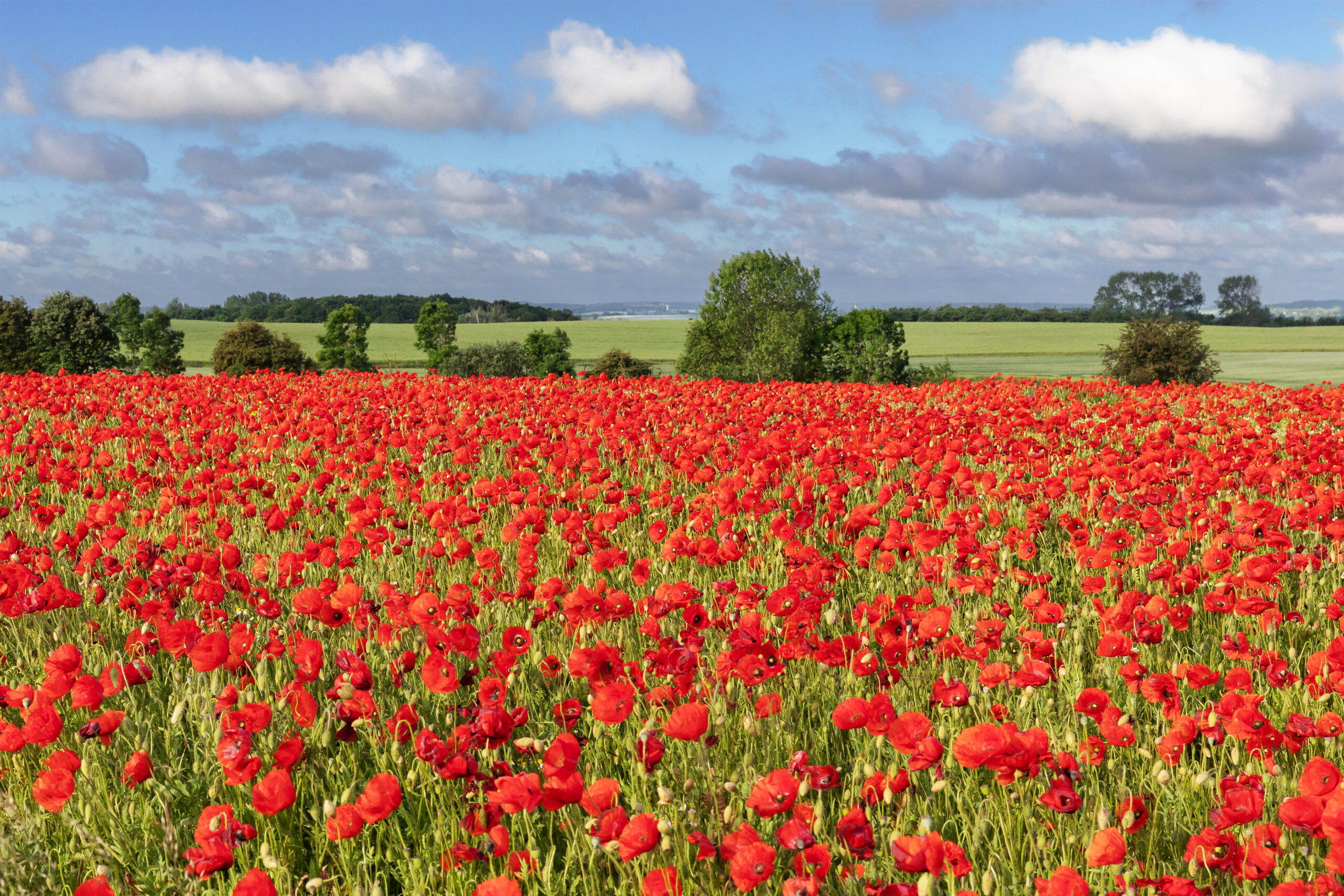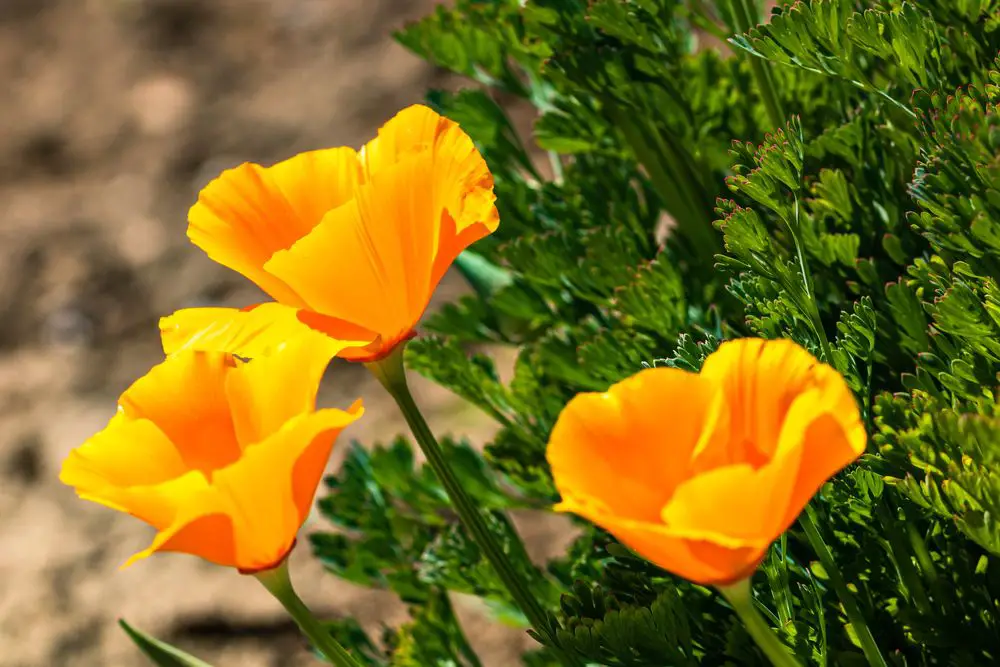A majestic flower that sways in a gentle breeze and thrives when standing out from the crowd. That is your adorable Poppy. It is from the Latin papaver meaning the milk of happiness.
Poppies are not hard to grow. Start with seeds in a container or on a tray, find the right place and the right time, thin out the seedlings, pay great care while they grow, harvest the Poppies often to encourage more flowers, harvest the seed pods to plants for the next season.
How to Grow Poppies?

They are the perfect plant to brighten your end-of-winter garden doldrums with their bright, cheerful flowers. Poppies get their name as the flower buds literally ‘pop’ open in the morning sun.
Poppies are easy plants to grow and add a Wow factor to your garden for their stunning and beautiful blooms. Although the blooms are short-lived, they are so beautiful. They are grown nearly all over the world and come in varied sizes, colors, and textures.
We will be learning how to plant Poppies correctly and all you need to know about growing and caring for Poppies from seeds or small plants once you’ve picked the right one for your climate. Anyway, they are the easiest plants to grow for all climates.
Six Tips For Growing Poppies:
1. Start with PoppySeeds.
Start planting Poppyseeds’ quality into the trays or directly into the Soil. Prepare compost and manure added to the Soil before planting.
Plant The PoppySeeds In A Container Or Tray.
Late summer and autumn is the recommended time to sow Poppyseed and it should be sown sparsely as the seed is very fine. Then, cover with a light sprinkling of seed raising mix and firm down. The germination takes 10-21 days.
Always keep the Soil moist during this germination period but not constantly wet as this may cause rotting.
When the seedlings are ready gently plant them and Mulch with a certified organic mulch.
Plant The PoppySeeds Directly In The Garden.
Start planting Poppies from seed by firmly putting a few quality seeds on the Soil; do not cover with more Soil. Sow the Poppyseeds in the garden when the Soil is warm from about 65 Fahrenheit to 75 Fahrenheit.
The Poppyseeds need light to germinate. Observe space distancing between plants 6″ to 9″ apart to maximize air circulation and reduce powdery mildew.
2. Plant Poppies In The Right Location And At The Right Time.
Generally, Poppies love full sun and need at least 6 hours of sun either way. Place Poppies in a sunny location for a good start. They also need limited watering once settled in their location.
While other varieties grow very large, up to 5 feet tall, it is essential to plan accordingly and plant Poppies where they will have room to grow and thrive to their fullest.
PoppySeeds grow at their best when sown directly into a location where they are kept permanently rather than being grown from containers.
Plant them in cold winters, sow the PoppySeeds in Spring. In warmer and tropical areas, the sowing of seeds begins in late falls, such as October – January. Poppyseedlings would emerge in the spring.
3. Make Sure To Thin Seedlings.
Once your Poppyseedlings are one inch tall, thin them from 5 to 10 inches apart, they will not do well if they grow side by side. PoppySeeds, when carefully sewn, may have abundant seedlings.
While to grow, they might choke each other out and have inadequate airflow. Most likely, they are more susceptible to pests and diseases.
But, still, for best results, allow the remaining plants to grow undisturbed.
4. Care for Poppies.
Fertile Soil And Adequate Water.
Provide your Poppyplants with fertile Soil, and they should be watered regularly, which can help the flowers thrive and encourage more blooms. But, they can also tolerate dry conditions.
Then, always make sure not to overwater the seedlings. Poppies are relatively easy to care for. Just don’t forget to water them during dry spells.
These beautiful Poppies will bloom for a few weeks. By then, the length of bloom could be extended through regular watering and the application of Mulch for moisture retention.
Light and Temperature
Poppyplants need lots of strong light. Find the sunniest part of your garden because Poppies love a lot of sunlight. Thus, without enough light, your beautiful Poppies will not be able to produce enough energy and flowers.
Poppyplants prefer temperatures between 60 and 90°F. Looks so good and adorable for your Poppies in achieving the optimum temperature that can thrive or grow in high humidity levels.
Fertilizing
Start providing nutrients to your Poppies by adding compost and manure to the Soil. Begin fertilizing as soon as the plant needs it to encourage bigger plants and more flowers.
You can add fertilizer every month. Another option is incorporating slow-release organic fertilizer into the Soil.
Removing dead flowers by cutting off the flower stalk at the base of the plant will encourage further flowering. As perennial Poppies, foliage can be cut back in autumn when it yellows to make way for fresh new growth.
Pests and Diseases Control
Poppies are pretty tough plants. However, they are susceptible to a range of rots and mildews. These would mainly be avoided by always planting in free-draining Soil and having good air circulation around the plants.
Whenever the powdery mildew strikes then spray with an organic fungicide.
When you spot Aphids, use a water jet spray on high pressure to dislodge the pests as possible to prevent their spread. Better use insecticidal soap and spray the tops and bottoms of all leaves. Once sprayed, quickly move away from other plants.
Propagation
The propagation method for Poppyplants exploits the plant’s propensity to reproduce itself from every scrap of root left behind when plants are moved. Hence, once most fleshy-rooted plants are established, it is impossible to eliminate them.
Nevertheless, you have planted up your cuttings, and new shoots have emerged. Wait a little longer. You have to pot them individually and plant them out to form a good root system.
Weeds Control.
You need to prevent other plants from coming in and competing for water and nutrients with your Poppies. Always keep them weed-free.
5. Harvest Poppies Often To Encourage More Flowers.
Most gardeners say that the larger-stemmed varieties of Poppies make a beautiful cut flower. To harvest your Poppies, just cut the stems nearly down to the ground just as blooms begin to crack open.
Your Poppies shall continue to open and develop once harvested. Just remove all leaves from the stem, and place the flower in water. It will last about five days in a flower vase.
You can use beautiful seed pods in cut flower arrangements. To harvest the seed pods as soon as the petals fall off.
6. Harvest PoppySeed Pods To Plant For The Next Season.
Don’t cut the largest and prettiest flowers at the end of every season. Poppies’ beautiful seed pods form after the petals fall off.
Just leave these on the plant. Until such time you see them pop and holes form under the rim of the plant.
To harvest your Poppyseed pods, just cut when the pods turn light brown. Let it dry out for 1-2 weeks before breaking open. You could store your Poppyseeds in a jar for a period of up to two years.
What are Poppies?
Poppies are flowering plants in the family of Papaveraceae. They are herbaceous plants that are often grown for their very colorful flowers. Some species of Poppies are monocarpic: it means dying after flowering.
They could be over a meter tall with flowers up to 15 centimeters across. The flowers have 4 to 6 petals.
Many stamens form a conspicuous whorl in the center of the flowers and an ovary of two or more fused carpels. Poppypetals are crumpled shoots.
Poppies bloom from spring into early summer. They grow wild in eastern and southern Asia, and South-Eastern Europe. It is said they originated in the Mediterranean region.
History and the Flanders Poppy
The Flanders Poppy is more significant and the best known of all the Poppies. It is the international symbol for Remembrance Day of the years of fighting that waged across Flanders during World War 1.
At the beginning of the war in 1914 there were Poppies sparsely growing in fields of unnourished earth. Yet, at the end of the war in 1918, Poppies grew in profusion over the battlefields spreading from southern Belgium to the northwest of France.
They formed carpets of red as far as the eye could see, growing in remembrance of the bloodshed from the hundreds of thousands of men who gave up their lives in that war.
It’s recorded that over a million soldiers from more than 50 different countries were wounded, missing or killed in action there.
Final Thoughts on How to Grow Poppies with Six Tips to Grow Healthy Poppies
Poppies are an excellent plant to grow. These wildflowers are super vibrant and very attractive to pollinators like bees and butterflies to your garden. It’s a great way to attract wildlife and get the kids interested in nature.
Another good thing, most Poppies are self-seeding, which means they naturally grow back into your garden year after year.
We hope you’ve learned a lot from this simple article which speaks to the history of the popularity of the Poppyand gives you all the necessary guidelines to grow these lovely flowers for yourself and brighten up your own garden.
Have fun and happy gardening!
Jenny Marie
Tribal Writer
Edited By
Patricia Godwin

